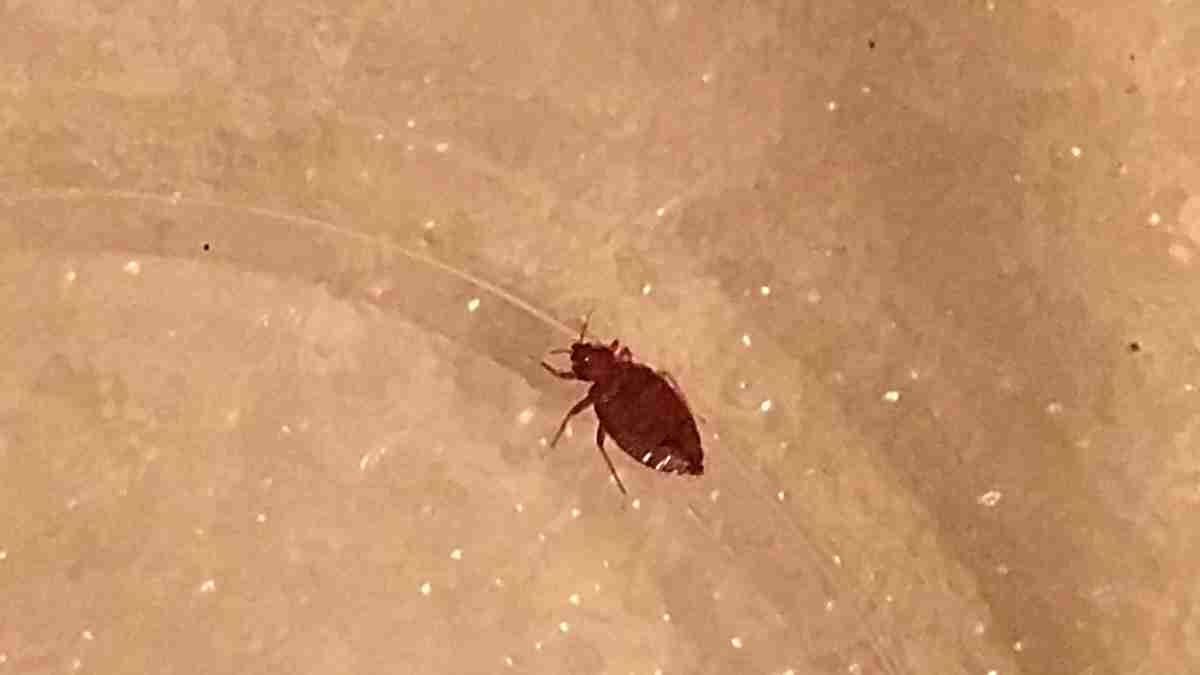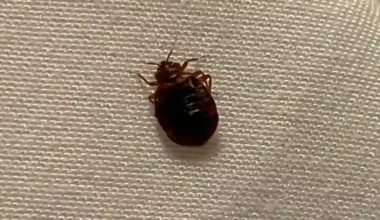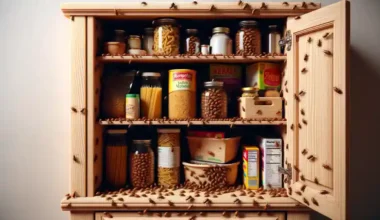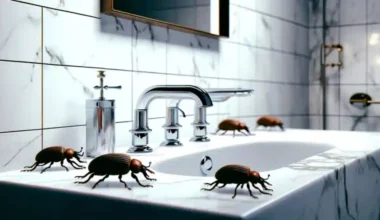This publication explains how to get rid of bed bugs without an exterminator. Bed bugs are about 5 millimeters in length, smaller than a pencil eraser. They’re smart, tough, and quickly reproduce. Bed bugs can live for months between meals and know where to hide so you don’t see them. a female bed bug could lay 500 eggs during its lifetime—Molekule.
These ferocious bloodsuckers could cause much trouble in the house. They could leave red, itchy wets all over you should they get into your bed.
Can you get rid of bed bugs on your own?
You can eliminate bed bugs on your own without exterminators. However, you want to be patient, as getting rid of bed bugs could take some effort and time doing it yourself. Using some other chemical and nonchemical approaches could also be helpful, particularly where there’s a large infestation.
Some factors could make bed bugs more difficult to eliminate. For instance, if there is clutter in the home, or you often travel and bring new ones along in your luggage, it could be tougher removing them from the home.
Suppose you can’t eliminate them yourself, it helps to speak with a professional exterminator.
How to get rid of bed bugs without an exterminator
To get rid of bed bugs yourself, do the following:
1. Identify the areas of infestation
It’s helpful to find bed bugs early before they start multiplying if they’re in your home. It’s cheaper and easier to get rid of a small infestation than a larger one. However, it could be more difficult to detect smaller infestations.
Hire an expert to conduct a survey or search for bed bugs yourself. Some experts utilize specially-trained dogs in hunting them down by their smell.
Their small and narrow bodies allow them to squeeze into tiny areas, like your mattress seams, or curtain folds.
Also, look for them:
- Besides the tags of the box spring and the mattress
- In baseboards
- Inside electrical outlets
- Furniture joints
- Bed frame and headboard cracks
- Beneath loose wallpaper
- Beneath paintings and posters on the walls
- In the seam between the ceiling and the wallpaper
Use a flashlight and magnifying glass when searching over all these places.
You can spot signs of bed bugs by the following:
- Dark spots about a dot’s size – bed bug droppings
- Reddish live bed bugs about ¼-inch long
- Reddish stains on the mattress from crushed bugs
- Small and pale yellow eggs, yellowish skins young bed bugs shed, and egg shells
Immediately you spot a bed bug, place it in a sealed container, alongside 1 teaspoon of rubbing alcohol. Other bug types resemble bed bugs. If you’re unsure of the bug type. invite an exterminator or entomologist for identification.
Read also: dead cockroaches around: is there an infestation?
2. Contain the Infestation
Immediately you’re aware there are bed bugs in the home, you want to contain and eliminate them. another easy and quick way of trapping bed bugs is using the vacuum. Run the vacuum over potential hiding areas.
That includes your:
- Dresser
- Bed
- Electronics, like television sets
- Carpets
Seal up the vacuumed contents into a plastic bag and dispose of them before cleaning the vacuum thoroughly.
Seal up all your affected clothes and linens in plastic bags till you can wash them. Afterward, place them in a washer and dryer using the highest temperature possible. If you can’t wash an item, place it in the dryer for 30 minutes at the highest temperature.
Place anything you can’t treat in the dryer and washer in a plastic bag. If possible, leave it there for a few days to ensure they all die.
Suppose you can’t clean furniture; throw them away. First, tear it up and ensure no one else takes it home by spray painting the word ‘bed bug’ on it.
3. Prep for bed bug treatment
Before you treat your house, execute a little preparatory work to maximize your chances of getting rid of bed bugs without an exterminator. Ensure all your carpets, drapes, clothing, linens, and other hiding places are cleaned or thrown out.
Do the following:
- Remove magazines, books, clothes, or anything else lying on the floor or beneath the bed.
- Dispose of whatever you may.
- Don’t move items from an infested area into a clean space – it could spread them.
Seal up any open areas:
- Caulk cracks around baseboards and furniture.
- Tape up open electrical outlets.
- Glue down loose wallpapers.
Lastly, to ensure that bed bugs don’t climb on the bed, move the bed at least 6 inches from the walls.
4. Eliminate bed bugs
First, attempt to eliminate them without chemicals. It’s relatively straightforward to kill them at high temperatures or very low temperatures.
Here are a few ways to treat bed bugs using these methods:
Laundry bedding and clothes in hot water for 30 minutes. Afterward, place them in a dryer on the highest heat setting for 30 minutes.
Utilize a steamer on couches, mattresses, and other areas bed bugs hide.
Remove infested materials in black bags and place them outside when the sun’s hot.
Place bags with bed bugs in the freezer and leave them there for at least four days. Use a thermometer to check the temperature.
Immediately you’ve cleaned all visible bed bugs, ensure that the area is inhabitable for all others. Place bed bug-proof covers over the box spring and mattress and seal them completely. Bugs trapped inside will die, and new ones can’t get in.
Suppose these methods don’t eliminate all the bugs, it could help trying an insecticide.
Nonchemical and chemical treatments
Insecticides can assist in eliminating bed bugs from the home. Search for products approved by U.S. Environmental Protection Agency (EPA) specifically for bed bugs.
Here are a few types of insecticides you can try:
a. Pyrroles
Pyrroles, like chlorfenapyr, disrupt bed bugs’ cells to kill them.
b. Neonicotinoids
Neonicotinoids are versions of nicotine. They damage their bervous system. These chemcials work on bed bugs that are resistant to other pesticides.
c. Pyretrins and pyrethroids
Pyretrins and pyrethroids are the most common chemcials for killing bed bugs. Though some bed bugs have developed resistance to them.
d. Foggers or bug bombs
Foggers or bug bombs kill bed bugs, but they can’t reach crevices and cracks if the bugs are hiding there. They can also be harmful to humans through an incorrect application. These products could take a few months to eliminate all the bugs. Silica aerogel (Tri-Die and CimeXa) and Diatomaceous earth are two examples.
e. Plant oil-based products
Plant oil-based products, such as Bed Bug Patrol, and EcoRaider, are less harmful than chemical insecticides and are effective in eliminating bed bugs.
Read also: can bay leaves fight bed bugs?
5. Keep bed bugs at bay
It could take some time before you get rid of bed bugs without an exterminator. Before ensuring that your treatment is effective, you need evidence that the bugs have left. Survey the infested areas once every week for evidence of their activities.
To ensure you easily spot surviving bed bugs, place bed bug interceptors under each bed leg. These items could readily trap them before they climb into the bed. It could also help to continue checking the interceptors for a year.
Bed bugs are tough creatures. As soon as you think they’re out, you could find them again. You may attempt to use some different treatment methods to keep the infestation under check. And if they’re still around, it’d be best to hire a professional exterminator.
Contact a professional pest exterminator
If you can’t remove the bed bugs in your own, consider the services of pest control professionals.
Pest control organizations use effective bed bug treatments and chemicals you don’t have. They use insecticides that can kill them on contact and can also eliminate bed bugs in the long term when you put them in furniture and gaps in the home.
These pest control companies could also use whole heat temperatures in the room.
Professional treatments could take two or three visits to begin bed bug elimination. After each treatment, it could help to stay away from treated areas for some hours till the chemicals are dried.
Keeping the bed bugs out
Immediately after the bed bugs have left the home, you must ensure they don’t return. Do the following:
- Vacuum and wash furniture, bedding, curtains, and carpets often.
- Cover your box spring and mattress with a bed bug cover and zip it totally.
- Clear up all clutter. Don’t leave magazines, clothes, papers, or other items on the floor.
- Seal gaps around light sockets, electrical outlets, and baseboards to prevent bed bugs from sneaking back inside.
- Check hotel rooms for bed bugs when traveling so you don’t bring them home.






